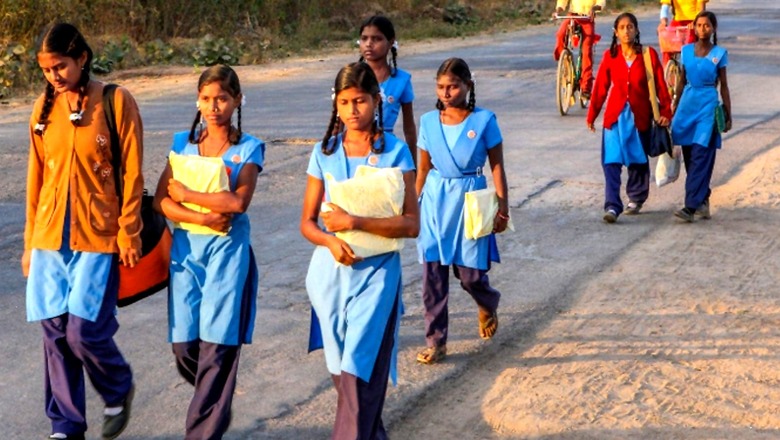
views
It is no secret that Indian education is in need of reforms, particularly from an infrastructural standpoint. Many schools run out of dilapidated and inaccessible buildings with rooms that are often too small for class sizes. One limitation that affects students, especially in rural areas, is the lack of access to reliable electricity. And, its ramifications on education are tremendous. Lack of electricity can affect multiple educational parameters, such as attendance, dropout rates and learning outcomes. Electrification efforts thus have the capacity to transform the state of rural education.
The availability of electricity has always been an issue in rural areas. While the government recently reached its target of 100 per cent electrification of villages, this does not paint the full picture. First, the criteria for ‘electrification’ do not cover the extent to which households in any given village have access to electricity. More importantly, the 100 per cent figure does not describe the quality or reliability of the electricity being provided—50 per cent of rural households experience 8 hours of power cuts a day.
Education and Electrification
This lack of access to affordable, reliable and high-quality energy in rural areas directly affects education in a variety of ways. Access to electricity means that teachers and students can utilise technology. This does not mean only computers; a device as simple as ceiling fan that provides ventilation on hot days can be the make-or-break decision that keeps a recalcitrant student in school.
Outside the classroom, electricity can extend the studying time of students. Electricity and electrical appliances can also ensure certain household activities are done quickly, which can provide students more time to study. Electrification has other advantages too—it can encourage women and young girls to step out with more confidence, through enabling security measures like street lighting and CCTV cameras. Overall, the cumulative benefits of electricity access tend to spill over into education—after all, a healthy and stress-free child makes for a better and more engaged student.
ALSO READ | To Sustain their Families During Lockdown, Kids from Rural J&K Skip School for Odd Jobs
Further, COVID-19 pandemic has re-emphasised the importance of access to electricity. Due to lockdowns, schools were forced to pivot to remote learning models, which are entirely contingent on access to electricity. Many students, or for that matter, households do not even have access to a digital device and even if they do, it is often a single device shared by multiple people. In such circumstances, it is difficult for students to continue their education, even with access to electricity. Without it, the situation only becomes that much more difficult. This is without getting into the exponential impact seen when teachers do not have access to electricity.
The Path Forward
However, the situation is not just doom and gloom— there is light around the corner. The Indian government has prioritised building India’s energy capacity as a national goal with a special emphasis on renewable energy. By targeting all stages of electrification, from generation to transmission to distribution, it will be possible to improve access and quality in rural areas as well.
The first priority should be improving the health of state-owned distribution companies (discoms). They act as the final point of delivery for electricity distribution and will be pivotal in serving rural areas. Unfortunately, many of them have been chronically mismanaged for decades and have poor standards of operation and low rates of revenue collection. As such, many of them do not have the health or incentive to service rural areas—fixing discoms would thus benefit rural areas without the complicated task of installing new technologies.
However, new technologies are the future of the energy sector. The doomsday clock is ticking as effects of climate change grow more pronounced each year. Although exact timelines are unclear, it is obvious to most people that usage of fossil fuels has to be replaced with renewables. One application of renewable energy that will be pivotal to rural electrification is Decentralised Renewable Energy (DRE).
DRE technologies like rooftop solar panels, micro- or mini-grids and rechargeable batteries are the ideal solutions to fill the gap. DRE can provide electricity to households that are not even connected to the grid, and could thus serve extremely remote areas that may not be financially viable for discoms. In those areas where electricity is available but power cuts are frequent, it can fill the gap during power cuts.
Just to be clear, electrification will be no panacea for rural education and needs to be accompanied by other measures, like increasing the capacity of schools and improving the quality of teaching. However, it is undeniable that electrification is a necessary foundation for these efforts to take shape, especially when e-learning and blended learning models of teaching are becoming popular. It is vital that this foundation be laid out while India’s population is still young and growing. If achieved, it has the potential to help transform the country. It also certainly doesn’t hurt that electrification can transform other areas like healthcare, industrial performance and work productivity.
The author is CEO, Smart Power India. The views expressed in this article are those of the author and do not represent the stand of this publication.
Read all the Latest News, Breaking News and Assembly Elections Live Updates here.

















Comments
0 comment